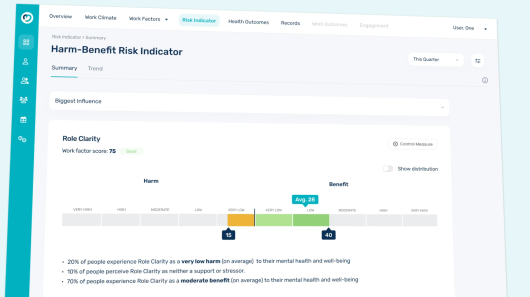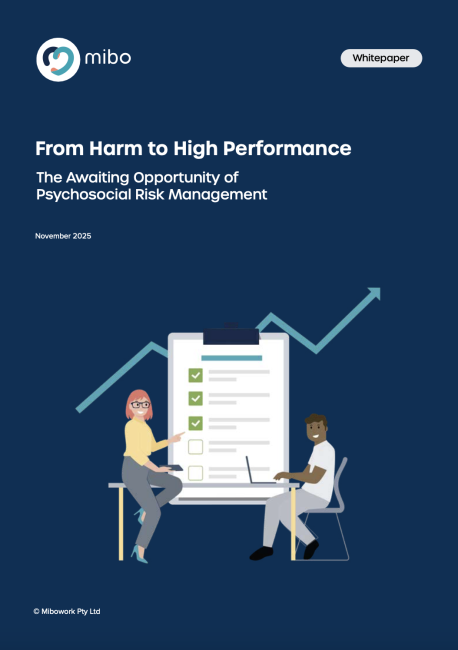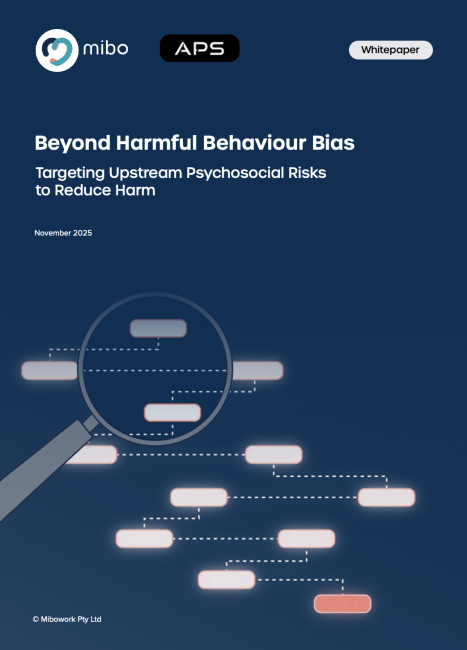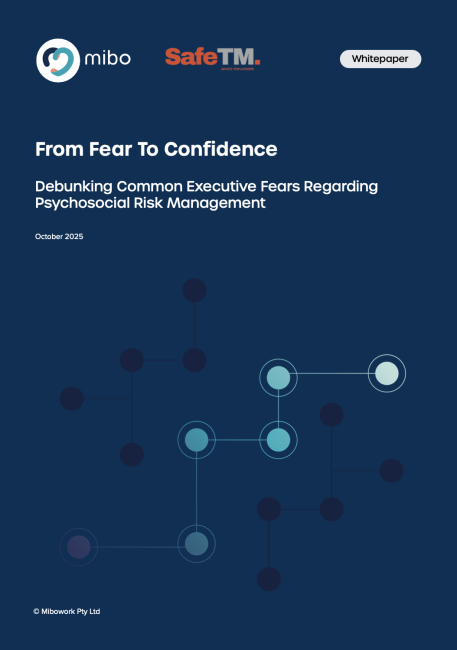How to Defuse Management’s Biggest Psychosocial Risk Management Fear

Featured

The Benefits of Assessing Psychosocial Health Outcomes

How To Turn Your Psychosocial Risk Learnings into Timely and Convenient Action

Welcome to Mibo's Revolutionary Harm-Benefit Indicator
In our engagement with clients, there is one big misguided fear that creates a lot unnecessary anxiety and interruption to psychosocial risk management initiatives. The conversation generally goes something like this:
“I can’t believe we’re now responsible for staff mental health when our employees have lives outside of work that impact their mental health….finances, marriages, kids etc….and they bring those problems to work.”
Often this comment is made by individuals not directly responsible for psychological health and safety who are generally more aware of the obligations under the WHS code of practise, but rather leaders or executives from other business areas who influence the path forward.
So how do you respond in a situation like this:
Begin by acknowledging their very reasonable concern and how you agree that it’s impossible for an organisation to be responsible for the mental health of employees considering it’s multi-factorial nature. Follow on with how the code is very clear that organisations are not responsible for the mental health of employees.
We have a positive duty to manage the psychosocial risks the work environment poses to employee psychological health. We are responsible for following the four steps of the model code of practise to minimise or mitigate the risk to psychological harm posed by the psychosocial hazards. At mibo, we prefer the more positive terminology of work factors instead of hazards, as this eludes to the very important reality that most work factors have the potential to either stress or support.
From a regulatory perspective, we need to clearly demonstrate that we are:
- Identifying psychosocial work factors (hazards) that potentially pose risks
- Assess the risk those factors pose to psychological harm
- Implement control measures to mitigate or minimise those risks so far as reasonably practicable
- Monitor the effectiveness of those control measures ongoing
Additionally, the code is very realistic when it comes to the nature of work and challenges that work can present and therefore never says that organisations are responsible for there being no risks. Basically, organisations need to show you are taking the necessary proactive steps toward minimising those risks in a manner that is reasonable.
Another very helpful consideration is that if you measure and monitor the risk of work factors to either harm or benefit, you can leverage the power of how work factors interact to demonstrate how you mitigate risks. When talking with stakeholders, try using an example such as how emotional work demands may be inevitably high for an industry or role, but how you can mitigate the risk posed by ensuring employees feel a high degree of organisational care and manager support.
You can then return to the mental health conversation.
“So it’s agreed that we’re not responsible for the mental health of employees. But through this initiative we can do three things. First, mitigate the risk of our employees suffering a psychological injury purely related to work, second, decrease the chance of work stress being a major contributor to complex mental ill-health conditions, and third, help our employees perform better and retain our talent.”
Being able to communicate the aforementioned points to leadership is key to both securing the roll out of psychosocial risk initiatives and the leadership buy-in crucial for the success of any initiative.
Reach out today so we can learn more about your psychosocial risk management aims and help you learn more about how Mibo can help you achieve them…




